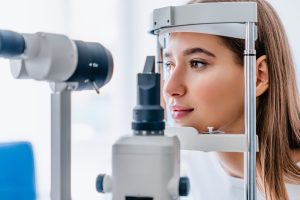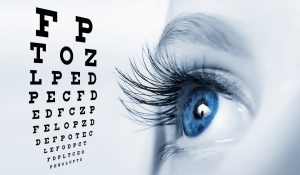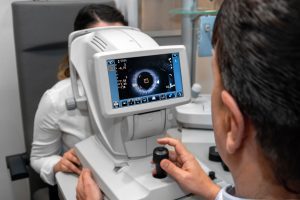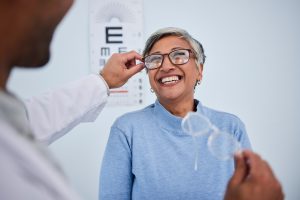What happens if an eye condition is detected during the exam?
Frequently Asked Questions
What happens if an eye condition is detected during the exam?
Suppose an eye condition is detected during an eye exam. In that case, the optometrist will discuss the findings with you, explaining the nature of the condition, how it affects your vision and potential implications for your overall eye health. They will then recommend a course of action, which may include further diagnostic testing to assess the severity or progression of the condition. Treatment options will be presented, ranging from prescription eyewear or medication to manage the condition to more advanced treatments such as laser therapy or surgery if necessary. The eye care professional will also advise on any lifestyle changes or preventive measures to help manage the condition and protect your vision. Follow-up appointments will likely be scheduled to monitor the condition over time and adjust the treatment plan as needed.
Some possible eye conditions that can be found during an eye exam
During an eye exam, an optometrist or ophthalmologist can detect a wide range of eye conditions, some of which include:
- Refractive Errors: These are common vision issues that affect how the eyes focus light, including myopia (nearsightedness), hyperopia (farsightedness), astigmatism (distorted vision), and presbyopia (age-related difficulty in seeing close objects).
- Cataracts: A condition characterized by clouding of the eye’s lens, leading to decreased vision and, if untreated, potentially blindness.
- Glaucoma: This group of eye conditions damages the optic nerve, often caused by abnormally high pressure in the eye, and can lead to vision loss and blindness if not treated early.
- Macular Degeneration: Also known as age-related macular degeneration (AMD), this condition affects the macula (the central portion of the retina) and leads to loss of central vision.
- Diabetic Retinopathy: A complication of diabetes that affects the eyes; it is caused by damage to the blood vessels of the light-sensitive tissue at the back of the eye (retina) and can lead to blindness.
- Dry Eye Syndrome: A condition where the eyes do not produce enough tears or the right quality of tears to be healthy or comfortable.
- Conjunctivitis: Also known as pink eye, it’s an inflammation or infection of the outer membrane of the eyeball and the inner eyelid.
- Retinal Detachment: A medical emergency where the retina at the back of the eye pulls away from its normal position, leading to permanent vision loss if not treated promptly.
- Corneal Conditions: Various conditions can affect the cornea, including keratoconus (thinning of the cornea), corneal ulcers, and infections.
- Amblyopia, Also known as lazy eye, occurs when the eyes and brain are not working together correctly, leading to decreased vision in one eye.
These conditions highlight the importance of regular eye exams for early detection and treatment, which can help preserve vision and prevent more severe complications.
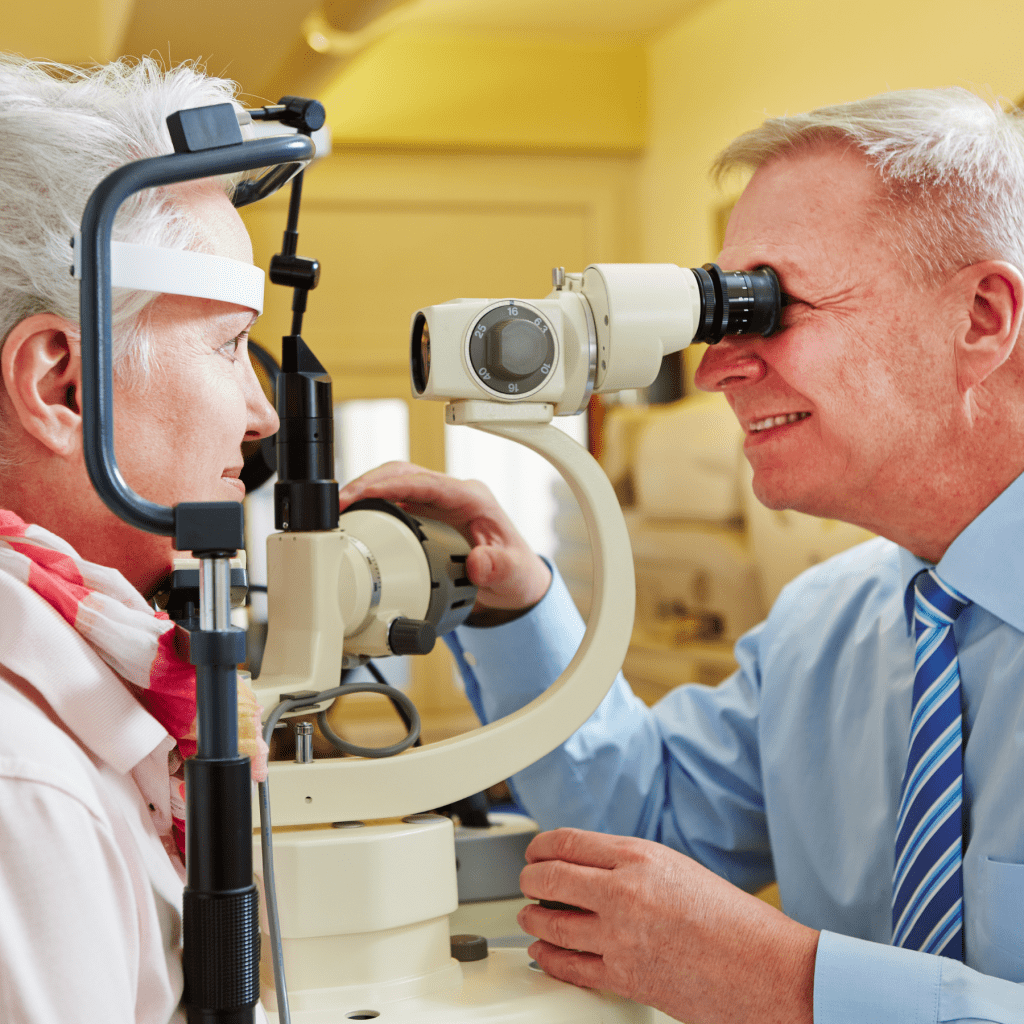
Related FAQs
Wearing glasses or contacts can indeed affect dry eye symptoms, but the impact varies. Glasses can help shield the eyes from environmental factors that exacerbate dry eye, such as wind or air conditioning. On the other hand, contact lenses can sometimes worsen dry eye symptoms by absorbing tear moisture or by causing irritation. Certain types of contact lenses are designed to be more breathable and retain moisture better, which may be suitable for people with dry eyes. It’s crucial to discuss with an eye care professional to find the most appropriate type of contact lens or glasses. Proper care and hygiene when using contacts, along with regular breaks from screen use, can help minimize dry eye symptoms.
Dry eye syndrome can be both a temporary condition and a chronic disease, depending on its cause and severity. Environmental factors or certain life situations, such as screen use or air travel can cause temporary dry eye. Chronic dry eye, on the other hand, may result from systemic diseases, medication side effects, or age-related changes in tear production. Management and treatment can alleviate symptoms, but chronic dry eye often requires ongoing therapy. It’s important to consult with an eye care professional for an accurate diagnosis and treatment plan. Understanding the underlying cause is key to determining whether dry eye syndrome will be a temporary issue or a chronic condition.
Yes, some specific exercises and therapies can help relieve dry eye symptoms. Blinking exercises, for example, can help improve meibomian gland function and tear film stability. Warm compresses applied to the eyes can also stimulate tear production and release oils from the glands in the eyelids. Gentle eyelid massages can help spread the oils evenly across the eye surface, reducing dryness. Using a humidifier to add moisture to the air and taking regular breaks to rest the eyes during screen time can also be beneficial. Newer technologies such as IPL (Intense Pulsed Light) and RF (Radio Frequency) are also becoming available. Consulting with an eye care professional for personalized advice on exercises and therapies is recommended.
Sleep plays a crucial role in managing dry eye syndrome. Poor sleep can lead to insufficient eye lubrication and worsening dry eye symptoms. During sleep, the eyes rejuvenate and produce the moisture needed for the next day. Good sleep hygiene practices can help ensure the eyes are well-rested and hydrated. It’s also important to avoid sleeping with any airflow directly hitting the face, as this can dry out the eyes. Establishing a regular, restful sleep schedule can significantly improve dry eye symptoms.
Indeed, some medications can exacerbate dry eye symptoms. Diuretics, antihistamines, antidepressants, and some blood pressure medications are known to reduce tear production or alter tear composition. It’s important to review any current medications with a healthcare provider to determine if they could be contributing to dry eye symptoms. Sometimes, alternative medications with fewer dry eye side effects can be prescribed. Always consult with a healthcare professional before making changes to medication regimens. Patients should also stay hydrated and consider using artificial tears if taking medications known to cause dryness.
Yes, it is quite common for dry eye symptoms to worsen in certain weather conditions. Dry, windy, or smoky environments can lead to increased tear evaporation, exacerbating symptoms. Conversely, high humidity can sometimes alleviate dry eye symptoms because the air is more saturated with moisture. Cold weather, especially during winter when indoor heaters are used, can also dry out the eyes. It’s advisable to use humidifiers in such conditions to maintain indoor humidity levels. Wearing wraparound glasses or protective eyewear outdoors can help shield eyes from harsh conditions.
West Edmonton Vision Clinic
Visit our vision clinic in central West Edmonton for comprehensive eye exams, contact lens fittings, glasses, and more. LL Eyecare Centre is dedicated to providing the highest quality optometric services and products to our patients. Our team of experienced optometrists is here to help you with all of your eye care needs. Schedule an appointment today!
Clinic Hours
Monday Closed
Tuesday 9:00-5:00
Wednesday 9:00-5:00
Thursday 9:00-5:00
Friday 9:00-5:00
Saturday 9:00-2:00
Closed Sunday / Holidays
